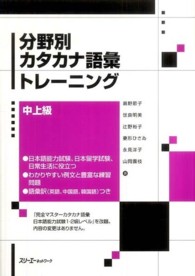Description
Artificial Intelligence in Healthcare for the Elderly provides valuable insights into how artificial intelligence can transform healthcare through personalized monitoring, ethical considerations, and real-world applications.
Artificial intelligence has the potential to revolutionize healthcare for the elderly by providing efficient and personalized monitoring and care. Though this technology has the potential to revolutionize care, there is currently little information on the potential of this technology in elderly healthcare. Artificial Intelligence in Healthcare for the Elderly explores AI algorithms that can transform health monitoring for older adults by analyzing data from wearable devices, electronic health records, and other sources that provide real-time data analysis, detect early warning signs of diseases, and offer personalized treatment. This book addresses the critical ethical, societal, and practical aspects of elderly care that are often overlooked with insights from various disciplines, including healthcare, technology, ethics, and sociology, to offer a holistic perspective on AI’s impact on aging. Artificial Intelligence in Healthcare for the Elderly offers an all-encompassing perspective on AI technologies employed in elderly healthcare by examining the specific types of technology used and delineating its role in elderly healthcare, drawing insights from existing research and case studies.
Table of Contents
Preface xxi
1 Smart Aging: Harnessing Artificial Intelligence in Elderly Healthcare 1
S.C. Vetrivel, V. Sabareeshwari, Ramya Ambikapathi, V.P. Arun and K.C. Sowmiya
1.1 Introduction 2
1.2 Demographics and Aging Population 3
1.3 Healthcare Needs of the Elderly 6
1.4 Current Healthcare Technologies for the Elderly 9
1.5 AI in Diagnostics and Early Detection 12
1.6 Remote Monitoring and Telehealth 14
1.7 Personalized Medicine for the Elderly 17
1.8 Cognitive Assistance and Mental Health 18
1.9 Ethical Considerations and Privacy Issues 21
1.10 Integration of AI into Healthcare Systems 22
1.11 Future Trends and Innovations 26
1.12 Conclusion 27
2 Telehealth Use Among Older Adults During COVID 19 33
Ramkrishna Mondal
2.1 Introduction 34
2.2 Telehealth in Geriatrics 36
2.3 Role of Telehealth During the COVID Pandemic for the Elderly 41
2.3.4 Use of Telemedicine to Meet Healthcare Needs of Older Adults 46
2.4 Factor Affecting Utilization of Telehealth in the Elderly during COVID- 19 48
2.5 Experiences of Telehealth in the Elderly 52
2.6 Perception of Telehealth Among Elderly and Physicians 58
2.7 Challenges and Barriers of Telehealth for the Elderly 60
2.8 Future Direction and Lesson Learned 67
2.9 Conclusion 68
3 IoT for Seniors: How Technology Improves Quality of Life of Older Adults 105
Jyoti Agarwal, Wazih Ahmad, Imtiyazul Haq, Anu Saxena and T. Gopi Krishna
3.1 Introduction to IoT for Seniors 106
3.2 Smart Home Devices for Seniors 108
3.3 Health and Wellness Monitoring 111
3.4 Security and Safety of Seniors 113
3.5 Social Connectivity through IoT 118
3.6 Adapting Existing Devices for Seniors 120
3.7 Overcoming Technological Barriers 124
3.8 Future Trends in IoT for Seniors 126
3.9 Conclusion 130
4 AI and Robotics in Elderly Personal Assistance: Fostering Independent Living 135
Divya Udayan J. and Umashankar Subramaniam
4.1 Introduction 136
4.2 Personalization in Elderly Healthcare 137
4.3 Design of an Adaptive Real-Time Intervention System for Elderly in Ambient Assisted Living 142
4.4 Effectiveness of Social Robots in Improving Independence of Elderly 158
4.5 Conclusion 163
5 Enabling Independence of Elderly People Using IoT Technology 169
Raghav Pasrija, Sandeep Banerjee, Sandeep Sharma and Viktória Schneider
5.1 Introduction 170
5.2 Comprehending IoT: Development and Omnipresence 171
5.3 Challenges Encountered by Elderly Individuals 173
5.4 Constraints of Conventional Approaches 174
5.5 Incorporating Internet of Things Technology into Elderly Care 177
5.6 Advancement and Future Research 182
5.7 Summary and Future Prospects 185
5.8 Conclusion 187
6 Intersection of AI Tools and Application for Elderly Healthcare 191
Priyanka Suyal, Camellia Chakraborty, Kamal Kumar Gola, Mridula, Pavel Skrabanek, Sagar Gulati and Rajdeep Jung
6.1 Introduction to the Health Tech Landscape 192
6.2 AI-Driven Diagnostics, Imaging and Robotics 195
6.3 Remote Healthcare Solutions for Elderly Well-Being 198
6.4 Wearable Health Devices and Medication Management for the Elderly 202
6.5 AI-Based Pain Management Strategies for Elderly Patients 207
6.6 Future Directions and Ethical Considerations in AI-Driven Elderly Healthcare 209
6.7 Medicare Cataloging Based on AI Technology 213
6.8 Conclusion 215
7 Technological Impact on Nutrition Management of Adults 219
S.C. Vetrivel, V. Sabareeshwari, Ramya Ambikapathi, V.P. Arun and K.C. Sowmiya
7.1 Introduction 220
7.2 Emerging Technologies in Food Production 222
7.3 Digital Health and Nutrition Tracking Apps 226
7.4 Smart Kitchen Appliances and Gadgets 229
7.5 Nutrigenomics and Personalized Nutrition 231
7.6 Telehealth and Remote Nutrition Counseling 234
7.7 Wearable Technology for Fitness and Nutrition 236
7.8 Augmented Reality in Nutrition Education 238
7.9 Blockchain in the Food Supply Chain 240
7.10 Challenges and Ethical Considerations 242
7.11 Future Trends in Technological Nutrition Management 244
7.12 Conclusion 246
8 Empowering Nutrition and Diet of Elderly People Using Digital Technology 251
Shiva Tushir, Navidha Aggarwal, Himanshu Sehrawat and Sabina Yasmin
8.1 Understanding Nutrition 252
8.2 Various Types of Macronutrients and Micronutrients 253
8.3 Nutrient Absorption and Metabolism 256
8.4 Key Concepts and Terminology Related to Nutrition 258
8.5 Fundamentals of Technology 262
8.6 Introduction to Technology 263
8.7 Need of Technology for Health 264
8.8 Technology for Disease Management in COVID- 19 266
8.9 Technological Interventions for Self-Care 268
8.10 Artificial Intelligence 269
8.11 Deep Learning 271
8.12 Machine Learning 272
8.13 Limitations of Machine Learning 274
8.14 Role of Various Technological Interventions in Self-Care 275
8.15 Possible Advantages 276
8.16 Possible Limitations 277
9 Healthcare 4.0: Healthcare in Technological World 281
Manoj Kumar Mahto, Durgesh Srivastava and Santosh Kumar Srivastava
9.1 Introduction 282
9.2 AI-Powered Tools for Proactive Healthcare and Chronic Disease Management 285
9.3 Transforming Remote Care with Telehealth and Connected Devices 288
9.4 Personalized Care Plans and Decision Support Systems 291
9.5 Challenges and Opportunities: Ethical Considerations and Future Directions 294
9.6 Conclusion: A Future of Empowered and Accessible Elder Care 299
10 Ethical Considerations in AI-Powered Nutrition Guidance: Balancing Privacy, Data Security, and Bias Mitigation 305
Shweta Saraswat, Vrishit Saraswat, Kamalkant Jain and Shourya Sharma
10.1 Introduction 306
10.2 Privacy Concerns in AI-Powered Nutrition Guidance 310
10.3 Data Security in AI-Powered Nutrition Guidance 317
10.4 Bias Mitigation in AI-Powered Nutrition Guidance 325
10.5 Recommendations and Best Practices 329
10.6 Case Studies 331
10.7 Future Perspectives 333
10.8 Conclusion 337
11 Prevention of Blindness for Diabetic Patients Using Deep Learning Techniques 343
U. Sadhana, Beena B.M. and Prashanth C. Ranga
11.1 Introduction 344
11.2 Related Works 346
11.3 Case Studies of Diabetic Retinopathy 348
11.4 Techniques to Detect Diabetic Retinopathy 348
11.5 Deep Learning Methods to Detect Diabetic Retinopathy 351
11.6 Dataset 352
11.7 Results 352
11.8 Conclusion 354
12 Transitioning to Healthcare 4.0: Embracing Digital Innovation for Enhanced Patient Care and Outcomes 359
Navjot Singh Talwandi, Shanu Khare and Payal Thakur
12.1 Understanding Healthcare 4.0 360
12.2 Digital Transformation in Healthcare 364
12.3 Leveraging Artificial Intelligence (AI) in Patient Care 367
12.4 Internet of Things (IoT) in Healthcare 369
12.5 Big Data Analytics for Healthcare Improvement 372
12.6 Telemedicine and Remote Care Services 375
12.7 Cybersecurity and Data Privacy in Healthcare 4.0 378
12.8 Conclusion 380
References 380
About the Editors 383
Index 387






